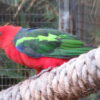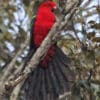Papuan King Parrot
Also known as:
Green-winged Parrot
Also known as:
Green-winged Parrot
DID YOU KNOW?
The king parrots are easily recognised as a group by their intensely coloured, shiny red, green and blue plumage and long tails.

Alisterus

chloropterus
Size:
36 cm (14 in)
Weight:
138-190 g (4.8-6.6 oz)
Subspecies including nominate:
three: A.c. chloropterus, A.c. callopterus, A.c. moszkowskii
Colour Adult:
A.c. chloropterus: Male-red head and underparts; upper mantle black with blue band, extending to nape; folded wing has yellow/green blaze; rest of wing dark green; blue back, rump and upper tail coverts; black tail. Upper mandible orange/red tipped with black, grey/black lower mandible. Eye orange. Female-dull green head, back and wings; dull green throat and breast margined with red; dark green tail. Upper mandible orange/brown tipped with grey.
A.c. callopterus: Male-as in chloropterus, but blue band on mantle not extended to hindneck and nape. Female-as in chloropterus.
A.c. moszkowskii: Male-as in callopterus. Female-as in male.
Colour Juvenile:
A.c. chloropterus: As in adult female, but red on breast absent; lateral tail feathers tipped with dull pink. Eye brown.
A.c. moszkowskii: As in adult female.
Call:
Calls are described as shrill and metallic, repeated while in flight or alarmed. Also high-pitched, metallic upslurred notes while perched.
Papuan King Parrot – AVoCet Cornell Lab Macaulay Library
More Information:
Content Sources:
CITES
BirdLife International
Cornell Lab of Ornithology/Birds of the World
Parrots: A Guide to Parrots of the World, Juniper and Parr, 1998
Parrots of the World, Forshaw, 2006. 2010 edition
Lexicon of Parrots, Thomas Arndt.
Parrots in Aviculture, Low, 1992.
Captive Status:
Rare
Longevity:
15-25 yrs
Housing:
Walk-in aviary, minimum length 4.5 m (14.7 ft).
Diet:
Small seed mix such as: canary, oats, safflower and a little hemp; spray millet; limited sunflower seed, dry, soaked or sprouted; sprouted pulses such as mung beans, cooked butterbeans and lentils; boiled maize; green leaves such as: Swiss chard, lettuce, sowthistle, dandelion, chickweed; vegetables such as: fresh corn, carrot, celery, zucchini, squash, green beans and peas in the pods; fruits such as: apple, pear, orange, cactus fruits, pomegranate, banana, kiwi; nuts such as: lightly cracked hazelnuts, pecans and roasted peanuts; complete kibble.
Enrichment:
Not a vigorous chewer; provide ladders, swings, ropes and puzzle/foraging toys. Provide overhead misters or shallow water bowls for bathing.
Nest Box Size:
Nest log 10″ (25.4 cm) around and 4-5′ (1.5-2 m) deep.
Clutch Size:
3-4
Fledging Age:
8 weeks
Hatch Weight:
—
Peak Weight:
—
Weaning Weight:
—
World Population:
Unknown but reported as locally common. Decreasing.
IUCN Red List Status:
Least Concern
CITES Listing:
Appendix II
Threat Summary:
Generally scarce and in low numbers, though locally common and probably underrecorded due to quiet behaviour. Over 3300 birds were reported in international trade during the period 1987 to 1992; quotas were greatly reduced in the mid-1990s. Is considered to have a high dependency on forest habitat, and tree cover is estimated to have declined by 3.1% within its range over the past three generations. It is therefore tentatively suspected that this may have led to a 1-19% decline in the species’ population over the same time frame, with a best estimate of less than 5%.
Range:
A.c. chloropterus: E New Guinea.
A.c. callopterus: C New Guinea.
A.c. moszkowskii: N New Guinea.
Habitat:
Found up to 2600 m (8528 ft) in dense forest, open areas with casuarinas, cultivated areas and secondary growth forest.
Wild Diet:
Takes Casuarina fruits, seeds, berries and nuts.
Ecology and Behaviour:
Seen singly, in pairs or groups of up to ten individuals. Are fairly approachable in wild. Quiet and inconspicuous while feeding in lower and middle canopy.
Clutch and Egg Size:
3-4 eggs
Breeding Season:
Begins in March.
Related Links:
—
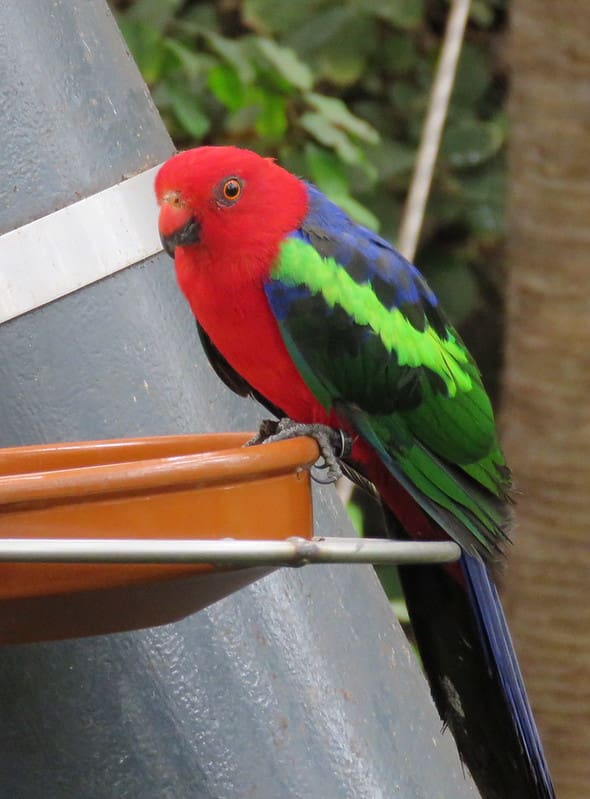
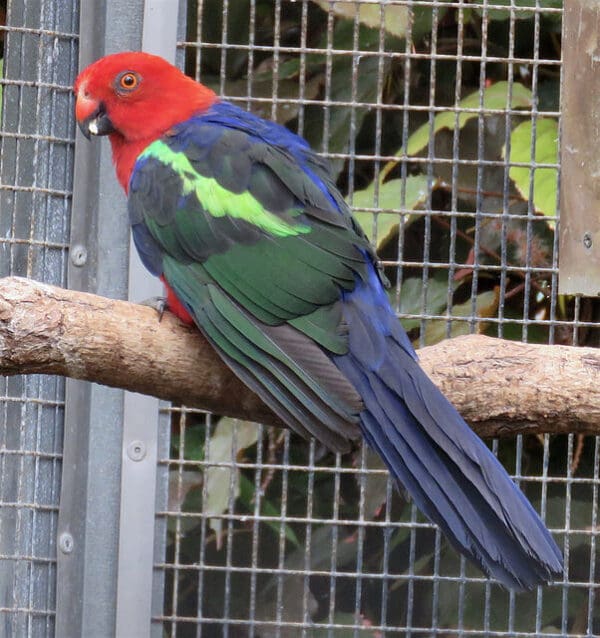
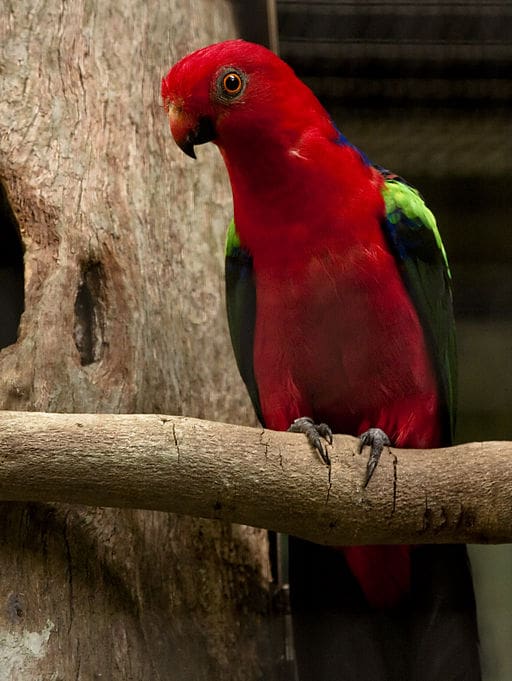
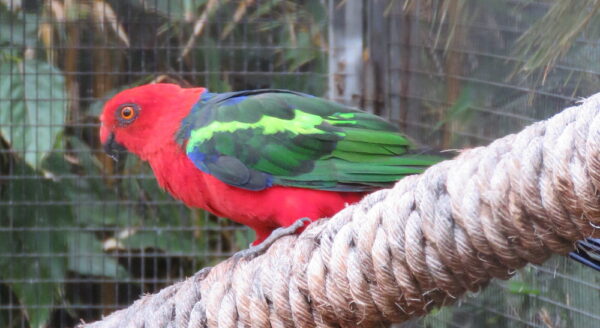

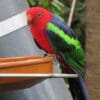
![© Florin Feneru [CC BY-SA 2.0] via Flickr A Papuan King Parrot perches on a branch](https://parrots.org/wp-content/uploads/2023/01/wpt_Papuan-King-Parrot_1176-4-100x100.jpg)
![© Peter Tan [CC BY 2.0] via Wikimedia Commons A Papuan King Parrot perches on a branch](https://parrots.org/wp-content/uploads/2023/01/wpt_Papuan-King-Parrot_1176-1-100x100.jpg)
